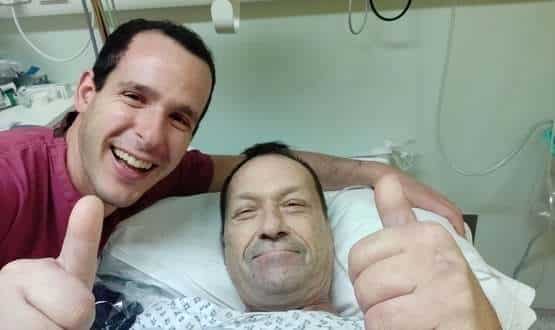Tweet talk

EHI Live 2014 may have seen the birth of a whole new measure of success in the rapidly expanding sphere of social media in healthcare.
This could be dubbed the ‘selfie stakes’ – which speakers were most in demand for pictures that could be Tweeted-out and posted to excited followers?
NHS England’s director of patients and information, Tim Kelsey, has long been seen as the champion of new digital services for patients and users. But he hardly came near the top of the stakes.
Instead, health informatics professionals were lining up for selfies with Dr Ranj, the star of CBeebies’ ‘Get Well Soon’ and a social media enthusiast. Admittedly, his huge following among six year old fans of ‘the poo song’ may have helped.
Demystifying doctors
Dr Ranj, a London paediatrician, admitted his “addiction” to social media was unplanned, and came on after he started taking on TV appearances while working in a children’s intensive care unit.
“I got started thinking about social media as a promotional tool. I thought I would use it so people know what I do. It was only when a friend said: ‘Why don’t you turn it around and offer something to people?’ that it really took off.”
Dr Ranj ran through the huge range of social platforms on which he has a presence – which range from Twitter to Facebook to Pinterest; on which he has an account devoted to his whacky sense of fashion.
He said social media gives doctors and other health professionals a unique opportunity to engage with a younger audience, demystifying the profession and encouraging them to open up. “You can get young people interested in mental health, in sexual health, in pursuing a career in medicine – which is really humbling.”
On the other hand, he acknowledged, social media has its downsides – for a start, maintaining all those accounts “takes a lot of time.” Dr Ranj also acknowledged that “putting your head above the parapet” online can lead to unpleasant comments from some users.
But, he argued, this is just part of the nature of a medium that everybody can use, and the benefits far outweigh the negatives. “It’s opened up channels of communication between professionals and ordinary folk, which is always a good thing.”
From the few to the many
It’s those channels of communication that some organisations are trying to use to improve the way in which they listen to feedback from patients and their families.
James Munro, the chief executive of non-profit patient feedback website Patient Opinion, told the Social Media Village at the show that the website was set up to address concerns about whether NHS organisations were failing to turn public feedback into better care.
“To some patients it feels pointless, like nothing will be done and it won’t lead to any change. People feel that when they do give feedback about their care, it isn’t welcomed by staff.”
Munro said the scandal over high death rates and poor care in A&E and some wards at Mid Staffordshire NHS Foundation Trust showed the dangers of organisations ignoring feedback from patients (Mid Staffs had high levels of complaints, but these were sent through to the board as bland reports).
He said websites such as Patient Opinion, and social media in general, are a potentially potent source of patient feedback that the NHS must tune into. “The world is changing – social media and the advent of online communities is changing the way we think about things, and we have to do it in a different way.”
To Munro, greater use of patients’ online feedback is also an unavoidable part of the wider transformation in the way that people interact with major institutions, including the NHS.
“We’re moving from hierarchies to networks, we’re moving from few people involved to many, and most importantly, we’re moving from patients being considered as passive participants to people who can play an active role in their care.”
Becoming the user’s voice
While social media can improve communication between patients and their care providers, the bonds that can form between patients online is also valuable in itself.
Arjun Panesar, director of Diabetes.co.uk, said the online community for diabetes patients has more than 170,000 members – roughly 6% of the UK diabetic population – and the vast experience of living with diabetes which that brings.
“We worked out that there are 850,000 cumulative years of experience within forum, and that number sticks up for itself.”
Panesar said the “myth” that doctors and nurses are the best – and only – people to speak to about health does not hold when speaking about online forums and communities. “People feel scared, anxious and confused about living with a condition that they’ll have every day of their life, and most people turn to the online community first before they speak to their doctor.
“As the internet has evolved, what we find is that people are increasing turning to each other, and it makes perfect sense – if you’re a person with a certain health condition, you want to speak to someone who also has that health condition.”
Panesar said discussion on the site ranges from treatments and diets to the latest Daily Mail headlines, providing a light-hearted environment for discussion and reducing the stigma of being a diabetic. “By taking away that [label], that’s the crux of the engagement, because you treat each other like you would speak to your friends and family.”
He said building an environment of trust creates a “sphere of influence” for the organisation, allowing it to operate as a trusted channel for communication to give voice to patients’ concerns. “We’re able to shift care to the user by empowering the patient. Instead of listening to the user’s voice, you become the user’s voice.”
Breaking down barriers with young people
One voice that is often not heard within healthcare, but overwhelmingly online, belongs to children and young people dealing with health problems.
One session at the Social Media Village was dedicated to using social media to engage and empower children and families, a tricky topic to navigate given the privacy and safety concerns that pop up when young people are online.
Dr James Woollard, clinical fellow to Dr Geraldine Strathdee, the national clinical director for mental health, said the high levels of social media use amongst children is an opportunity for clinicians, rather than an obstacle to be overcome.
“When children and their families come into the clinic, they’re wielding their mobile phones and are on Candy Crush, or on Facebook talking to their friends, or texting them,” he said. “You can’t push social media out of clinical practice, so you have to bring it in.”
Woollard has used Minecraft, a computer game that allows players to build constructions out of textured cubes in a three-dimensional world, to provide a “blank canvas” for patients to create environments and gather an insight into how their minds work.
“It told me a lot about how the young person thought: he was leading the session, which is exactly what you want to have.”
However, financial and technological restrictions are a problem: Woollard mentioned a child who said he would be more comfortable talking to his mother via instant messaging. A pencil and paper was passed between them as a lo-fi approach, given the lack of resources for a hi-tech one.
“We put barriers up as clinicians. I’m a frustrated user because my organisation puts up barriers for me to use [social media], and we’ve got barriers as adults in how we engage with young people. We think it’s something they do, not something we do.”
Go to the river, don’t divert it
This attitude to social media was backed up by Dr Ranj, who spoke about the need to adjust to people’s habits and needs. His advice for other organisations was that they should use channels that people already use to deliver services to them, instead of spending time and effort trying to “divert the river” and bring users to them.
The statistics are on his side: he pointed out that 80% of teenagers, and 90% of doctors, already use smartphones, that 70% of internet users already use social media, and that 80% have looked for health information.
Given these figures, the words of Dr Ranj and the other social media leaders should be heeded by clinicians and others trying to find new ways to share age-old messages about healthcare. The selfie generation isn’t going away, so it’s time to get snapping.




